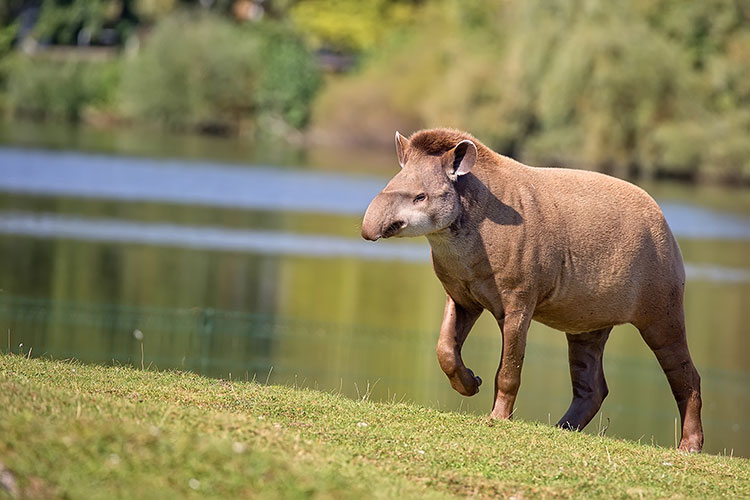Considered Brazil’s largest terrestrial mammal and South America’s second largest, tapirs can weigh up to 300 kg and grow up to over 242 cm in length. They are found from the South of Venezuela down to the North of Argentina, in open spaces or forests near watercourses.
Their diet is frugivorous and they play an important role in seeds dispersion, mainly of palm trees. Their presence is paramount for the formation and maintenance in environments where they live. Tapirs are lonely animals, with a slow reproduction; gestation can take up to 400 days (13 months); one young at a time is born weighing 3.2 – 5.8 kg. They can live up to 35 years.
These animals are threatened and at risk of extinction, mainly due to the rapid loss of natural environments, habitat fragmentation, hunting and being run over.
Interesting Facts
Intelligent animals
Despite their reputation, tapirs are very smart animals, with an enormous amount of scientifically proven neurons. TAPIRS are intelligent.
Excellent gardeners
Tapirs play an important role in the conservation of Brazilian biomes such as the Amazon, Pantanal, Cerrado (Savannah area) and Mata Atlântica (Atlantic rainforest). The reason for that is their big size enabling them to eat whole fruits (with seeds) and wandering through large stretches of land.
Ecologic Detective
Tapirs move around large distances within their area and in between fragments of forest, thus connecting different types of habitats. That is why they are considered “ecologic detectives”, contributing to a better understanding of the interrelations among mosaics of different landscape habitats.

